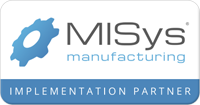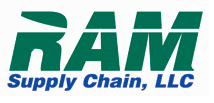Forecasting & Materials Management
 Forecasting & Materials Management process improvement activities focus on development of a detailed master production schedule, continuous improvement of material requirements planning to support the MPS, and execution of a shop floor control dispatch list which will directly support 100% customer satisfaction.
Forecasting & Materials Management process improvement activities focus on development of a detailed master production schedule, continuous improvement of material requirements planning to support the MPS, and execution of a shop floor control dispatch list which will directly support 100% customer satisfaction.
All performances are measured in terms of meeting sales order quantity and delivery dates. These objectives are accomplished through evaluation of business process activities related to MPS, MRP, and SFC. This valuation includes, but is not limited to, areas such as improved communications of master scheduling with sales order entry; material planning with master scheduling; and production control & purchasing with materials planning. Some efforts to facilitate this communication and process improvement are as follows and include posting performance evaluation to:
- Production plan objectives
- MPS (including performance to customer need)
- Responsiveness of material plan to MPS
- Lead time accuracy
- Inventory accuracy
- Routing accuracy
- Bill of material accuracy
- Dispatch list
- SFC Utilization and effectiveness
- Capacity load profiles
- Procurement requirements list
There are two other efforts to facilitate communication and process improvement. The first involves development of vertically integrated product line managers to coordinate master scheduling and material planning activities for the entire Bill of Material configuration from independent demand product to purchase components. The second is development of buyer / planners to coordinate the execution of material planning process to meet SFC material requirements needs. The execution of which will ensure improved customer satisfaction and improved profits.
Forecasting & Materials Management
demand forecasting technique(s)
sales forecasting model
forecasting methods for management
demand forecasting methods
sales forecasting software
demand forecasting (fairly competitive – use demand forecasting supply chain)
demand forecasting supply chain
Demand Forecasting Techniques
What is Demand Forecasting?
Demand forecasting is an activity involving top management and the sales team where demand is projected or forecasted by product SKU and customer for a given period of time (i.e the Sales Horizon). Most companies use sales forecasting software to help them model the historical sales activity and the demand estimates provided by the sales team to create a future projection. Demand forecasting in the supply chain is a difficult task. The accuracy of the forecast has an enormous impact on the cost of manufacturing. Un-forecasted demand often generates overtime costs, expedited material costs, and expedited shipping costs. To reduce these added expenses, improved measurements to the accuracy and improvement of forecasting is essential to any manufacturing company.
Does RAM Supply Chain offer help with demand forecasting techniques?
RAM Supply Chain has a proprietary process for working with the sales and operations team to develop a more accurate demand forecasting method. The RAM Supply Chain model involves techniques such as Improved Demand Management business process, improved Master Production Scheduling activities and implementation of a forecast consumption methodology proven to improve any manufacturing operations organization.
Can RAM Supply Chain help me implement a demand forecast?
Absolutely! RAM Supply Chain can train your senior management, sales, and operations teams on how to collect the data needed for generating a demand forecast. By inputting these data points into the demand forecasting software that you have in-house, we can help you optimize your current IT investment to get better data out of the system.
Other Demand Forecasting Techniques and Methods
Ethicon Endosurgery in Cincinnati, Ohio improved forecast accuracy to within 98% of its plan! This generated a cost savings of more than $30MM or 16%ROI on medical device manufacturing.

